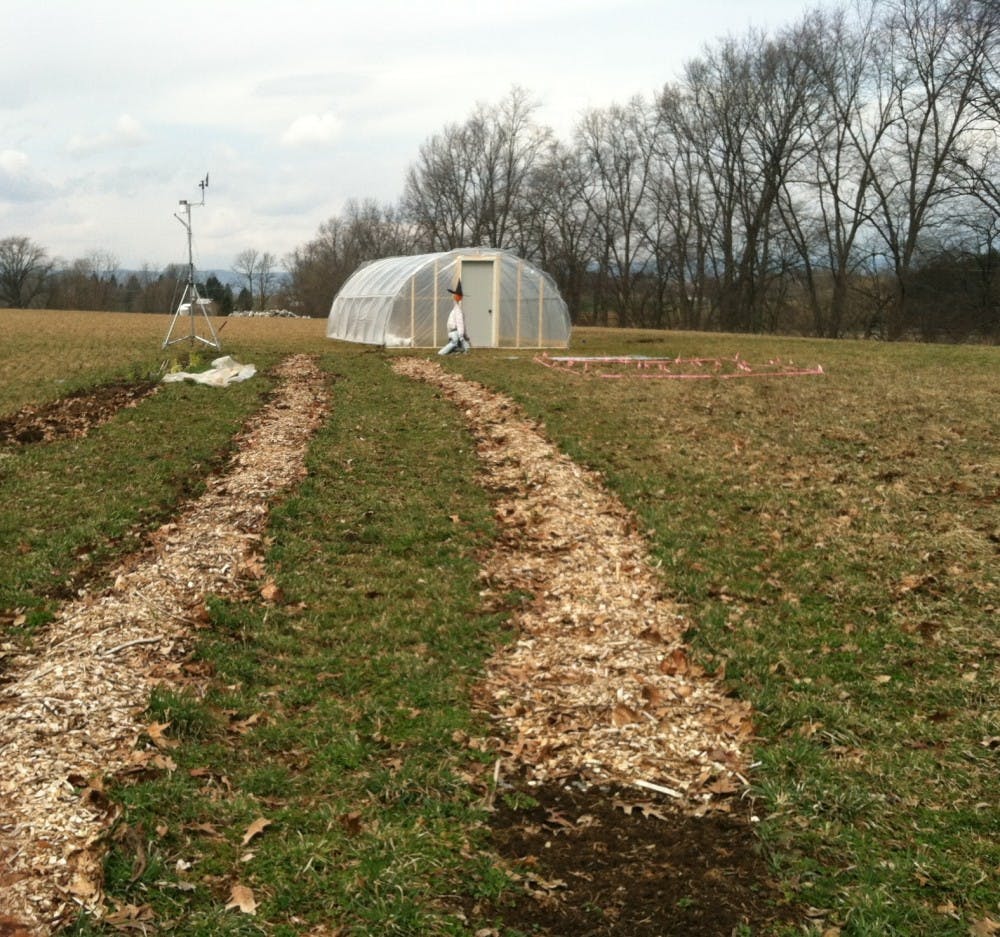Shippensburg’s Farm Club met last week to plant a new crop of seedlings for the spring. The food will be eaten by many Shippensburg students on-campus.
Chartwells, the food service company at SU purchases some of the yield to be used in dining halls.
“I think it’s really important to see where our food comes from,” Julia Saintz said of her experience in the Farm Club, “and I think we’ve become really disconnected from our food. It’s important to know where food is grown and it can be done in a little bit of space.”
The farm is located behind the football stadium, near the SU Foundation building. It is protected by a rather fearsome scarecrow.
Seedlings should hit the ground growing around May 4th, which, according to the “Farmer’s Almanac,” is the last day of frost.
The plants will call Kriner home until that day when the ground is soft enough and frost will not damage the crop. The club will look for a solution for Kriner’s regular closure on Friday through Sunday as to how the plants will be watered, but for now the seeds are young enough to make it through the three-day stretch.
Vegetables Chartwells does not take are sold at the Thoughtful Farmer’s Market at a table in May. Leftovers are donated to Shippensburg Produce and Outreach, and club members can take home the rest for meals, graduate assistant Julia Russell said Money from Chartwells and the farmer’s market helps purchase more seeds, compost and tools.
Any profit saved will eventually go to purchase more parts for a green house to replace the current hoop house, a tarp coverage for the garden, but not an enclosure. It needs frames and glass to add to the parts of the structure they already have.
The hoop house is research focused, which is what the Farm Club is working on now. After it perfects its growing methods, the team can focus on producing more in a small space.
The process takes four to six weeks before the seedlings can be planted in the ground. The club cannot start them outside or the seeds will not begin to grow.
The process of planting began with drilling holes in the bottom of a cup for drainage. Using her finger, Julia made a “dimple” in the soil, put in two or three seeds, and covered it with a bit of dirt. Saintz said the seeds could sprout in paper towels.
Larger plants included three varieties of peppers, and yellow cherry and Brandywine tomatoes. Those were planted in plastic drinking cups as the root system will grow deeper and require more room to grow. Plants with smaller roots, like broccoli, cabbage, cauliflower, kale, and Prizetaker leeks were placed in shallower green trays.
The best part of planting the seeds in their indoor home?
“No weeding involved -— right now,” Saintz said.
Officer elections will be held at this week’s meeting, on Thursday, April fourth at 3:30. Anyone interested in a position or simply joining the group should email Julia at shipufarms@gmail.com.




The Slate welcomes thoughtful discussion on all of our stories, but please keep comments civil and on-topic. Read our full guidelines here.